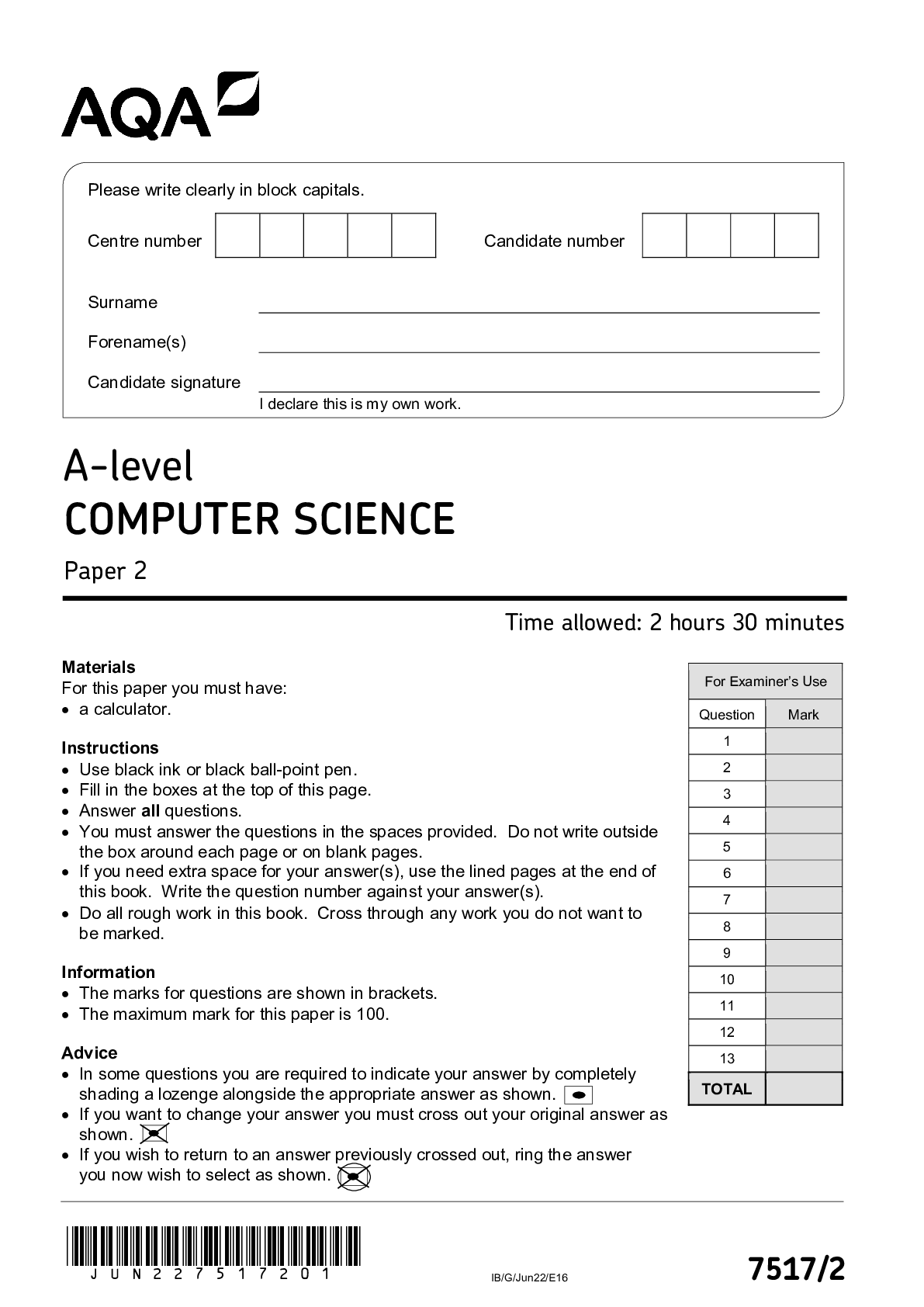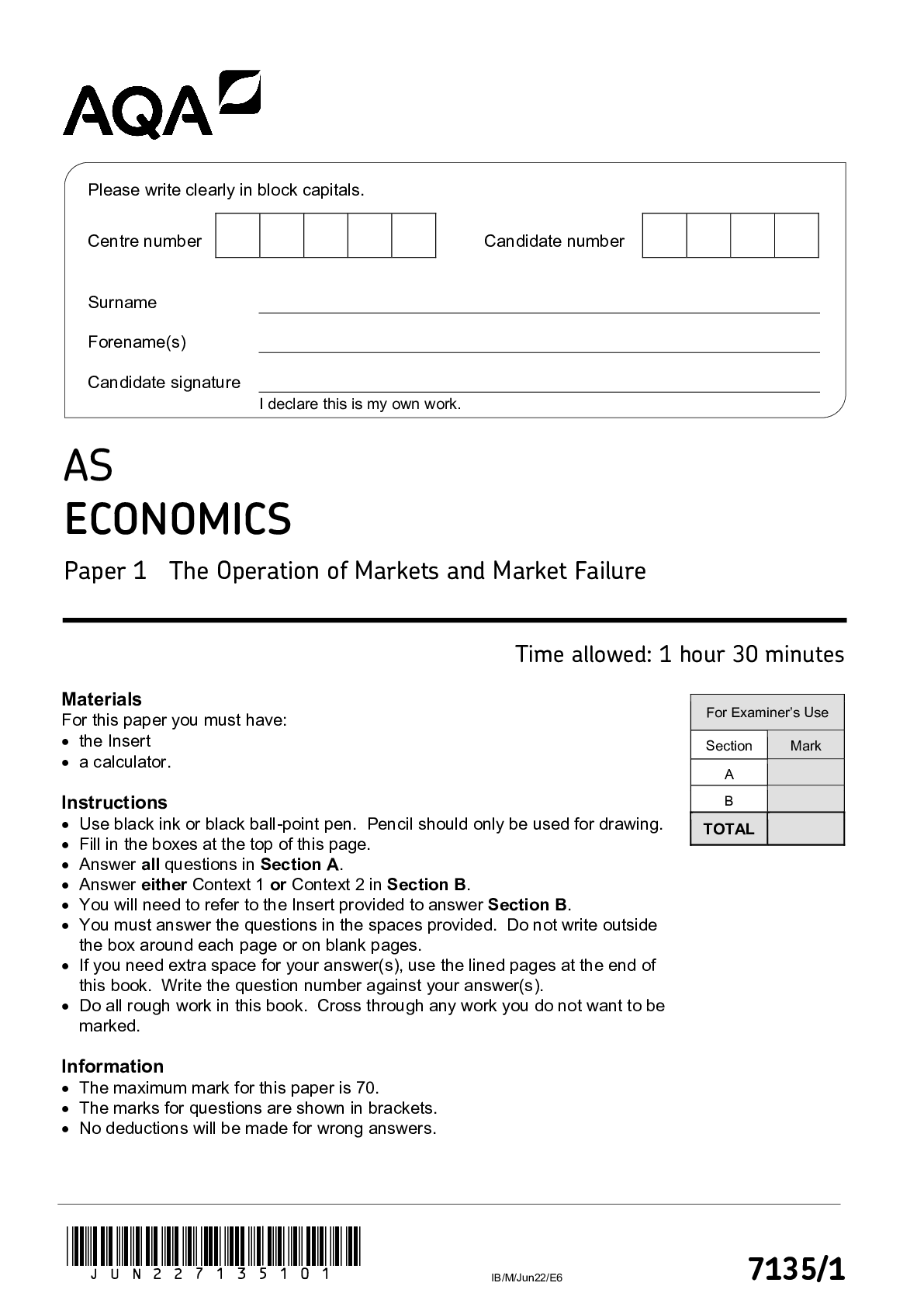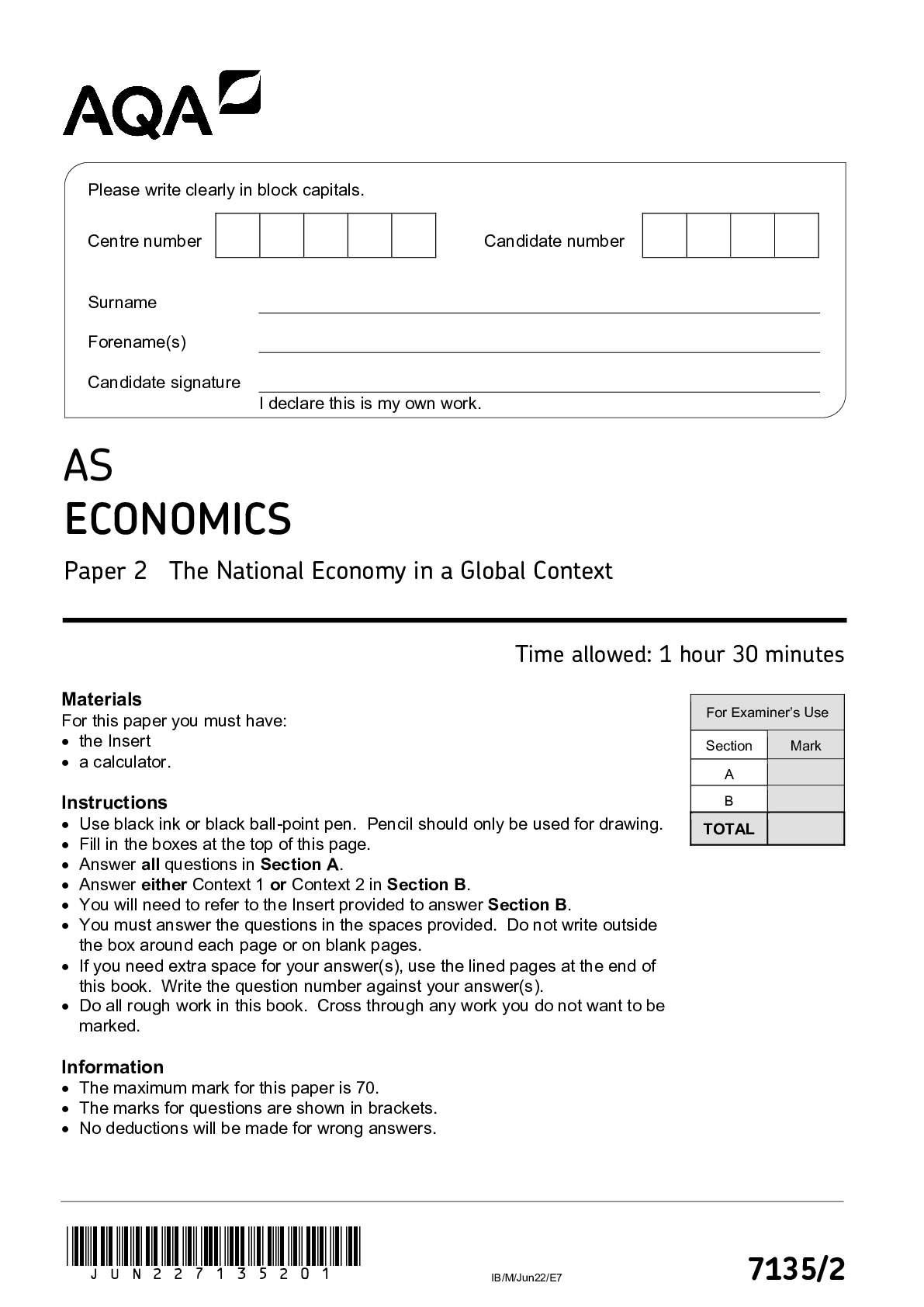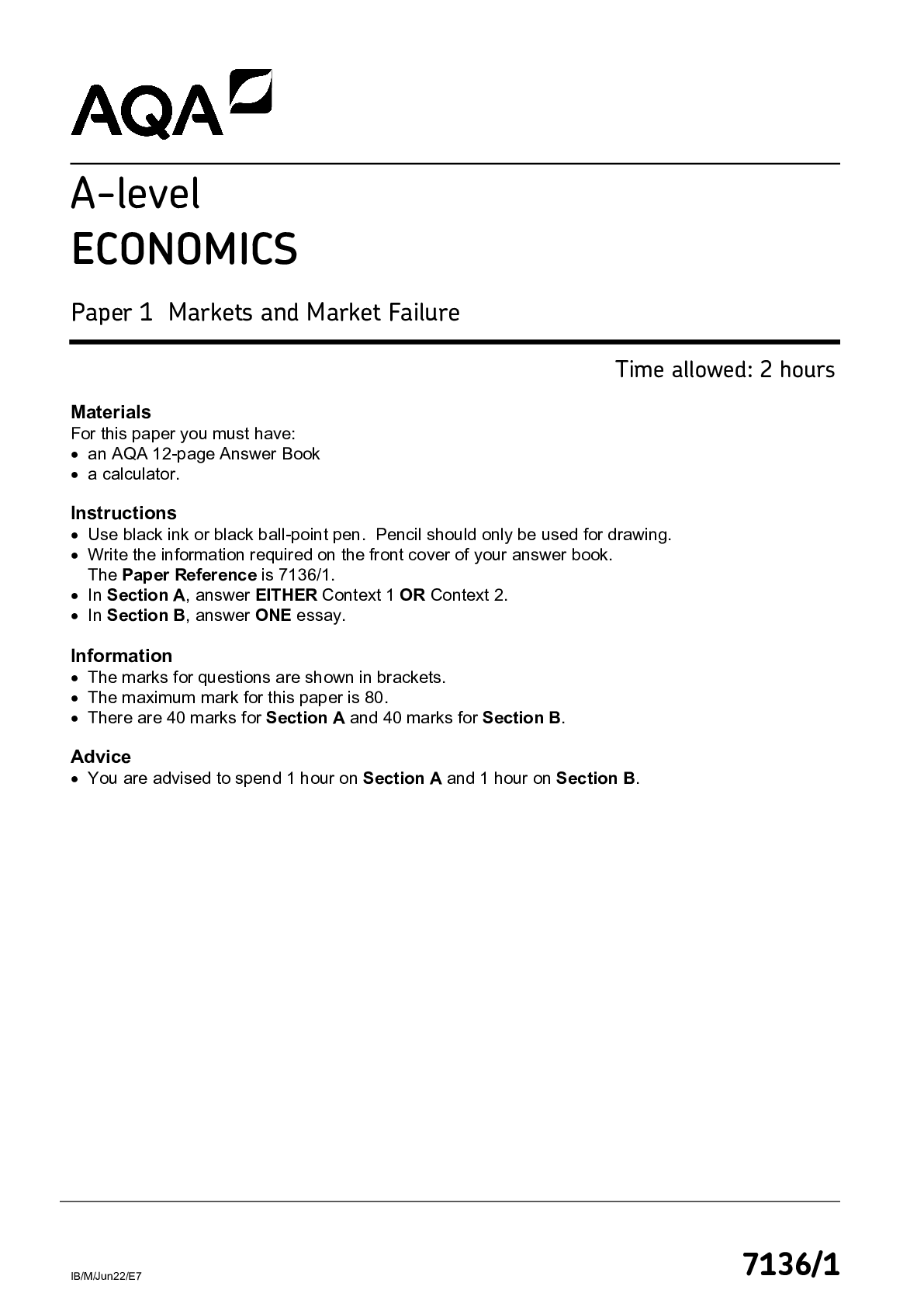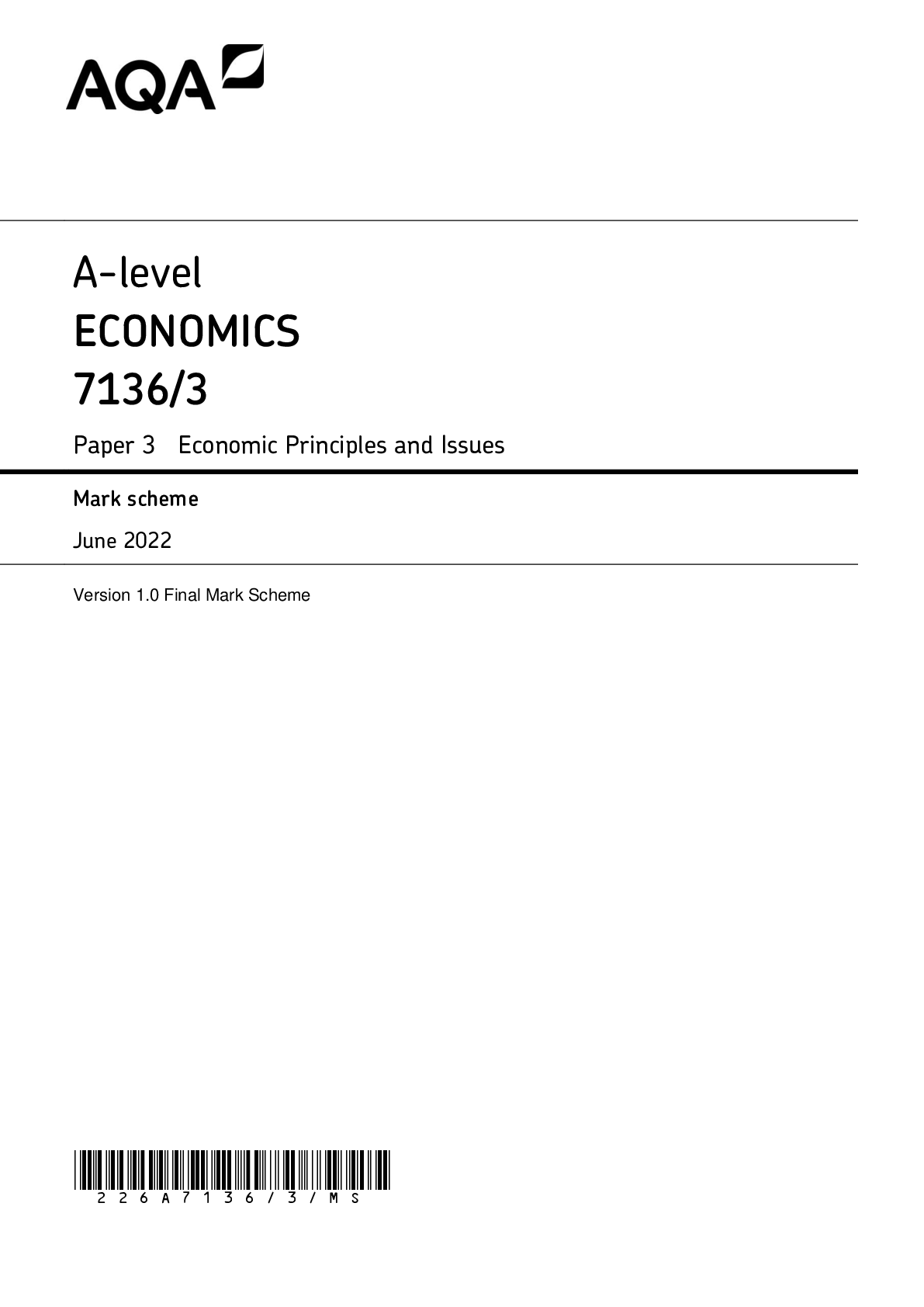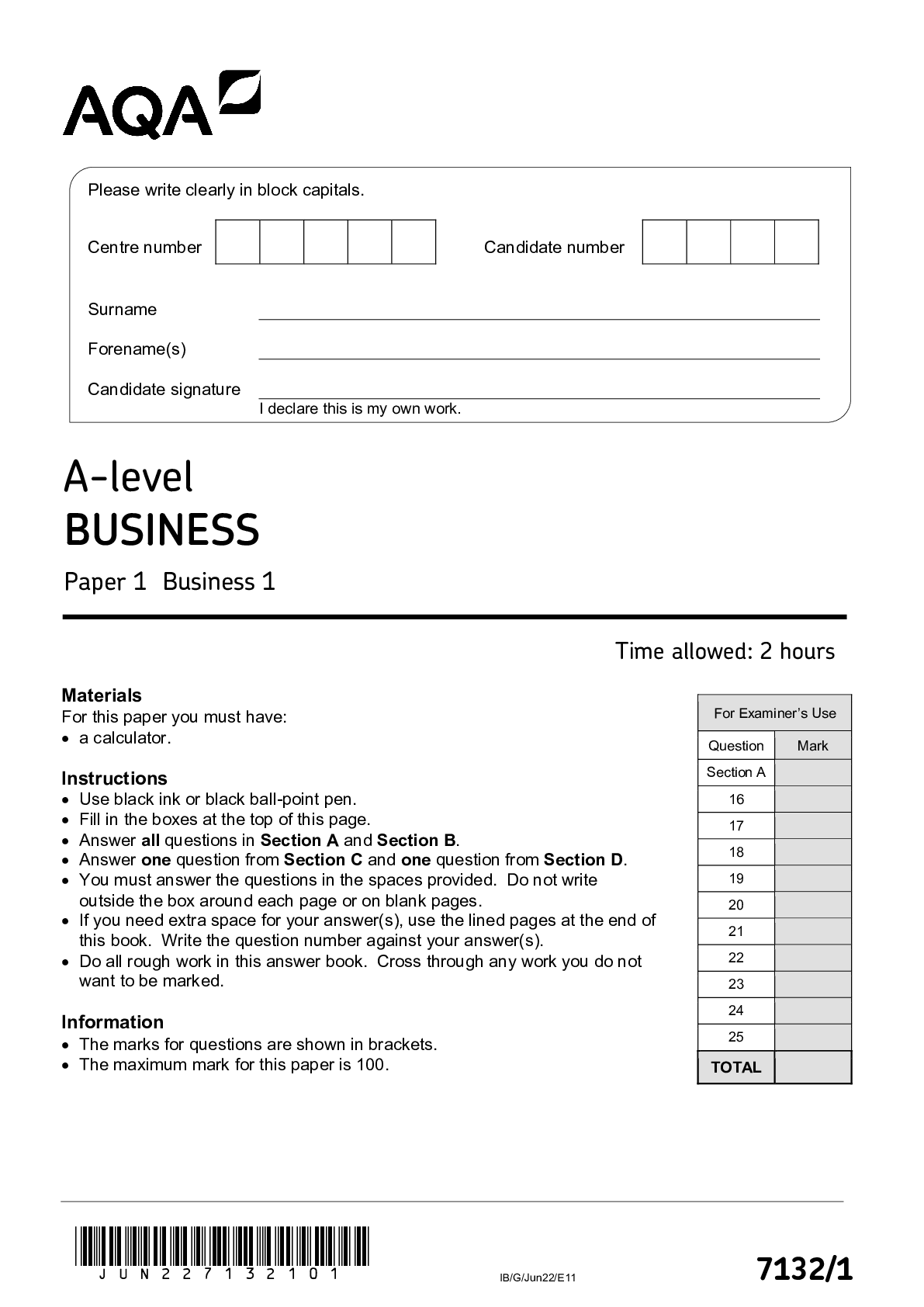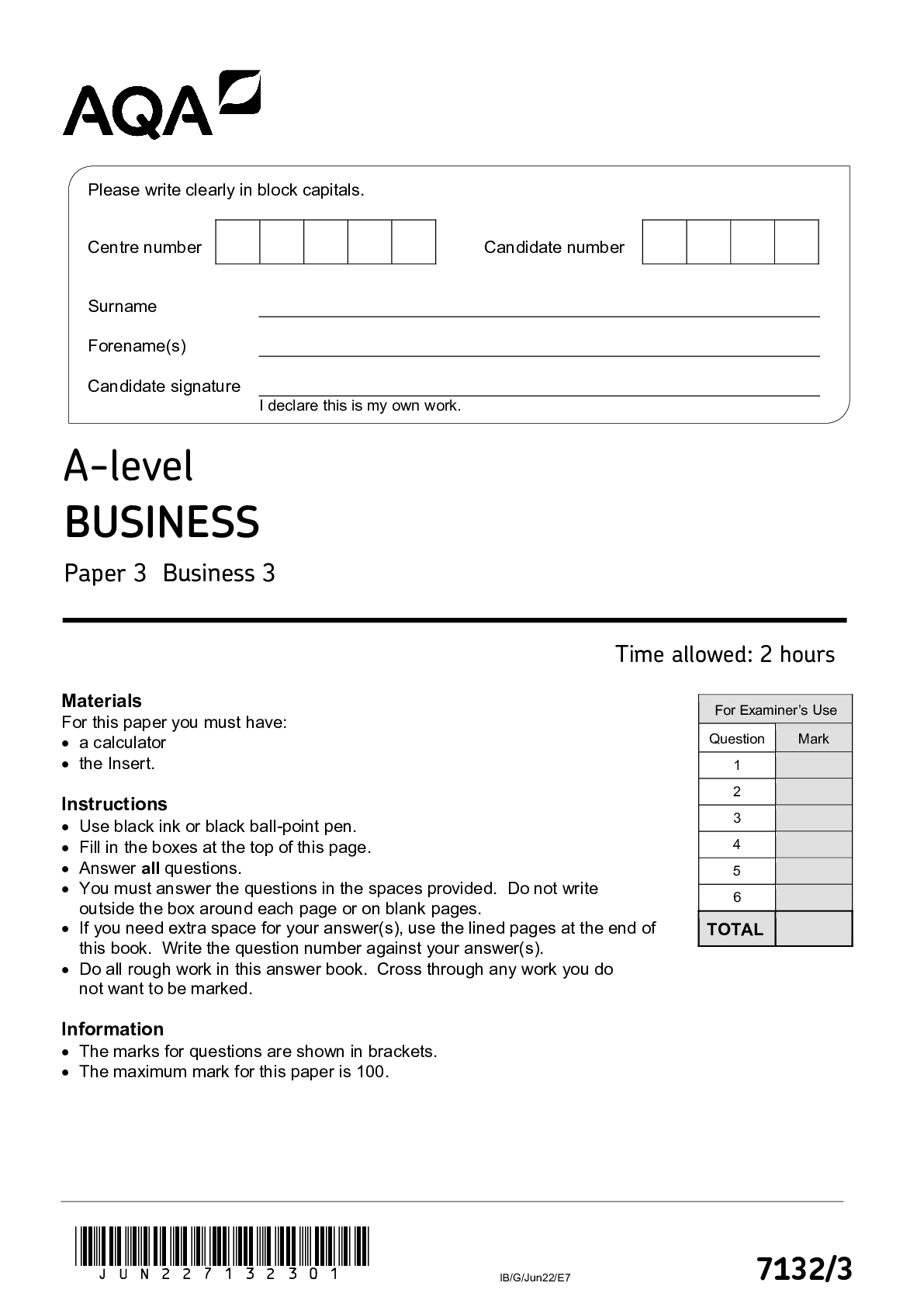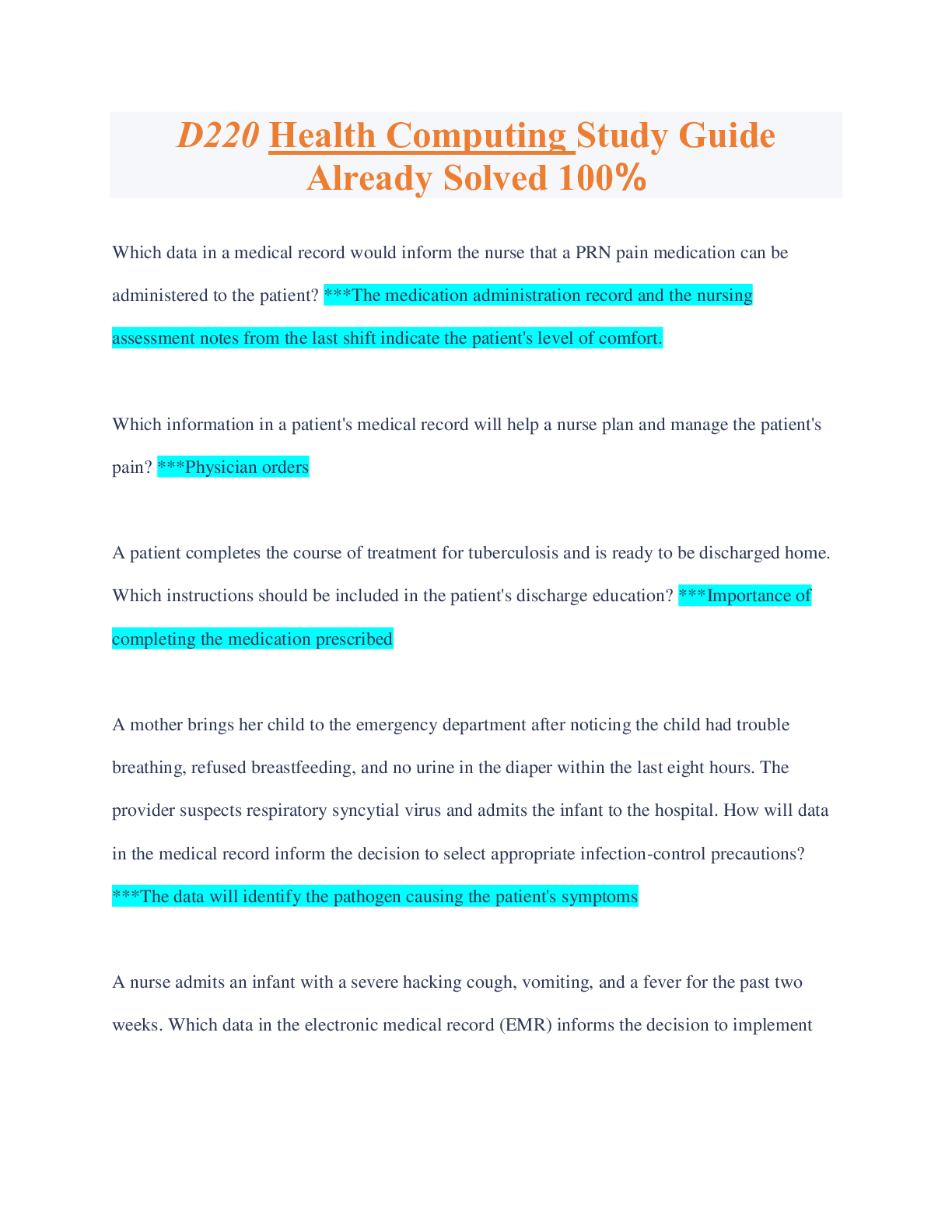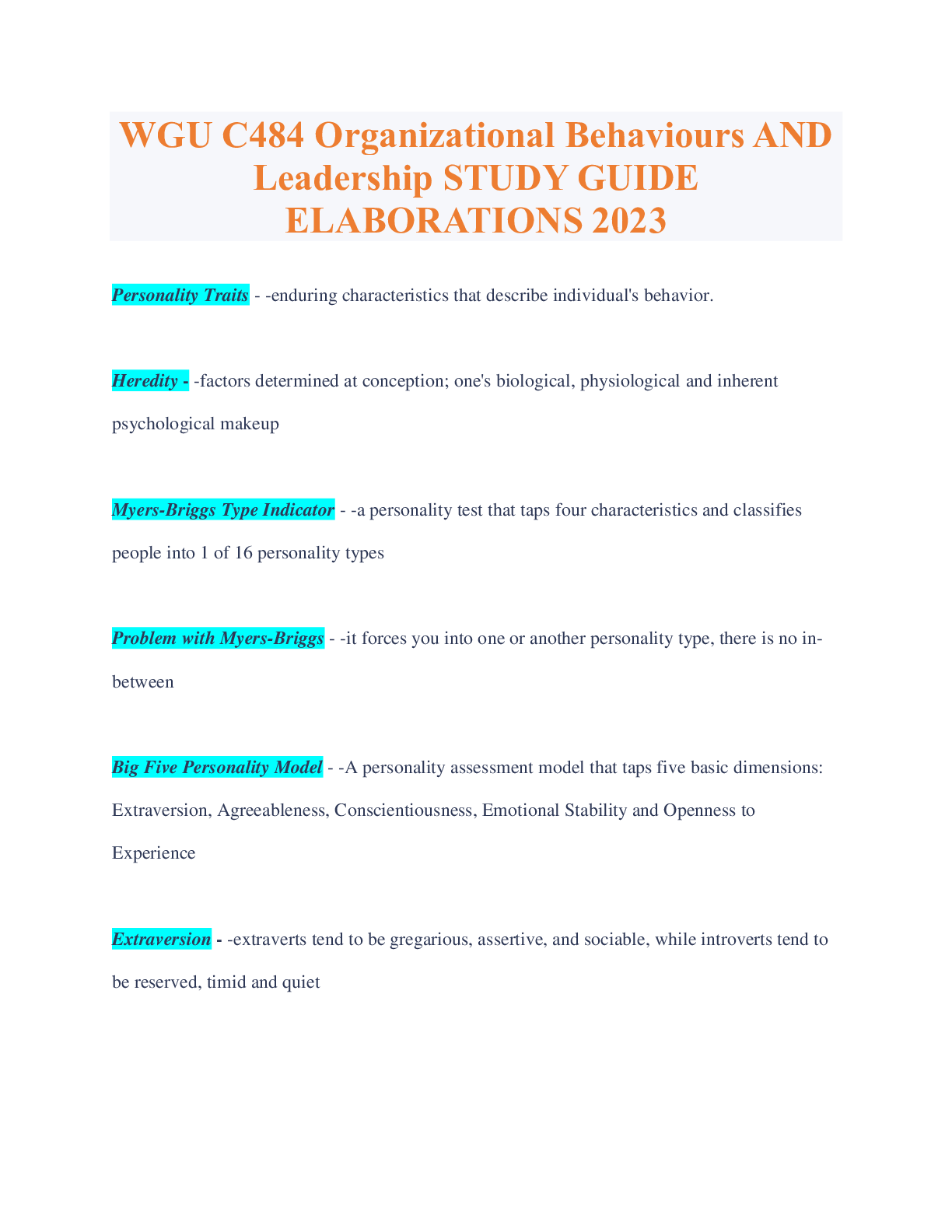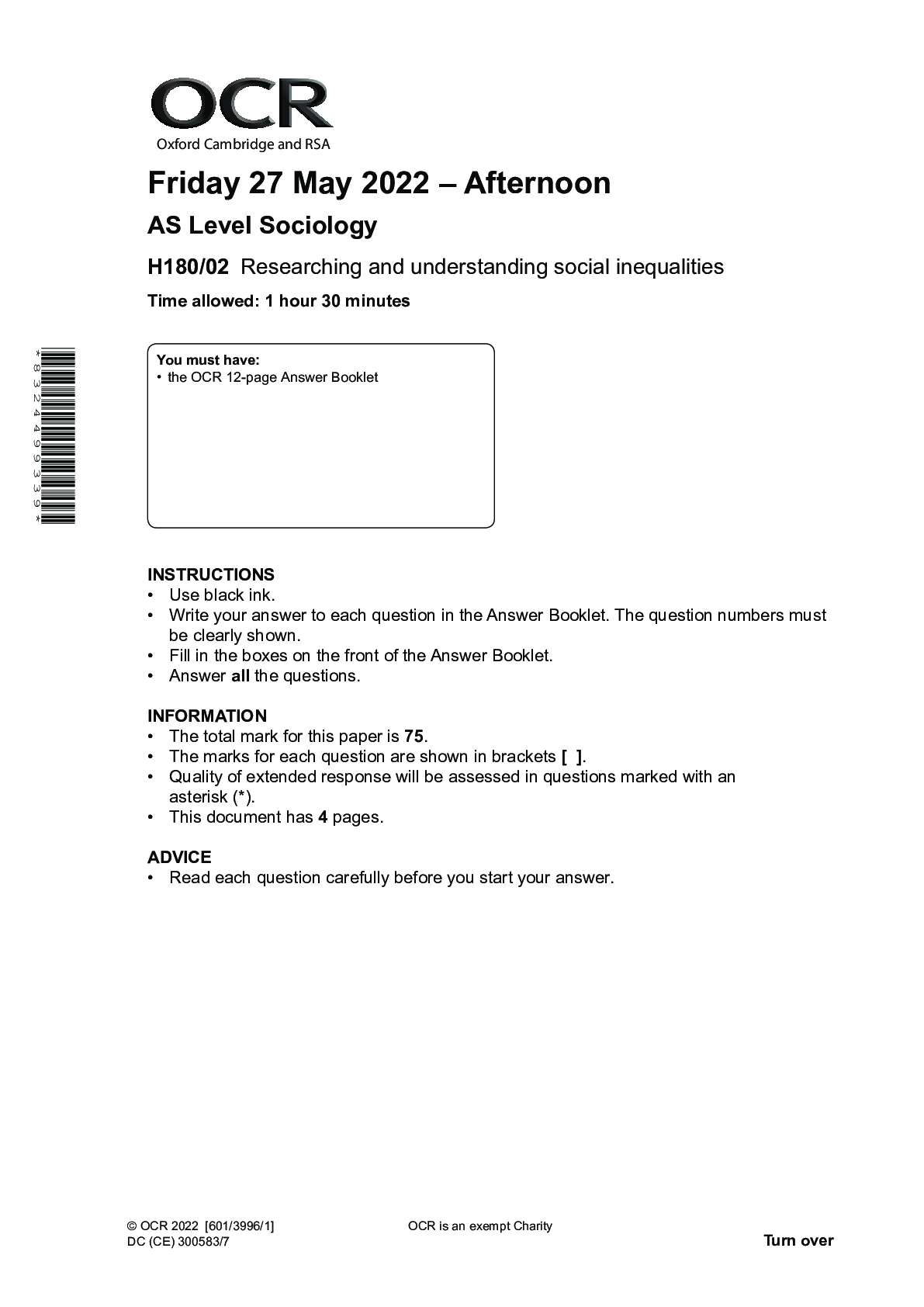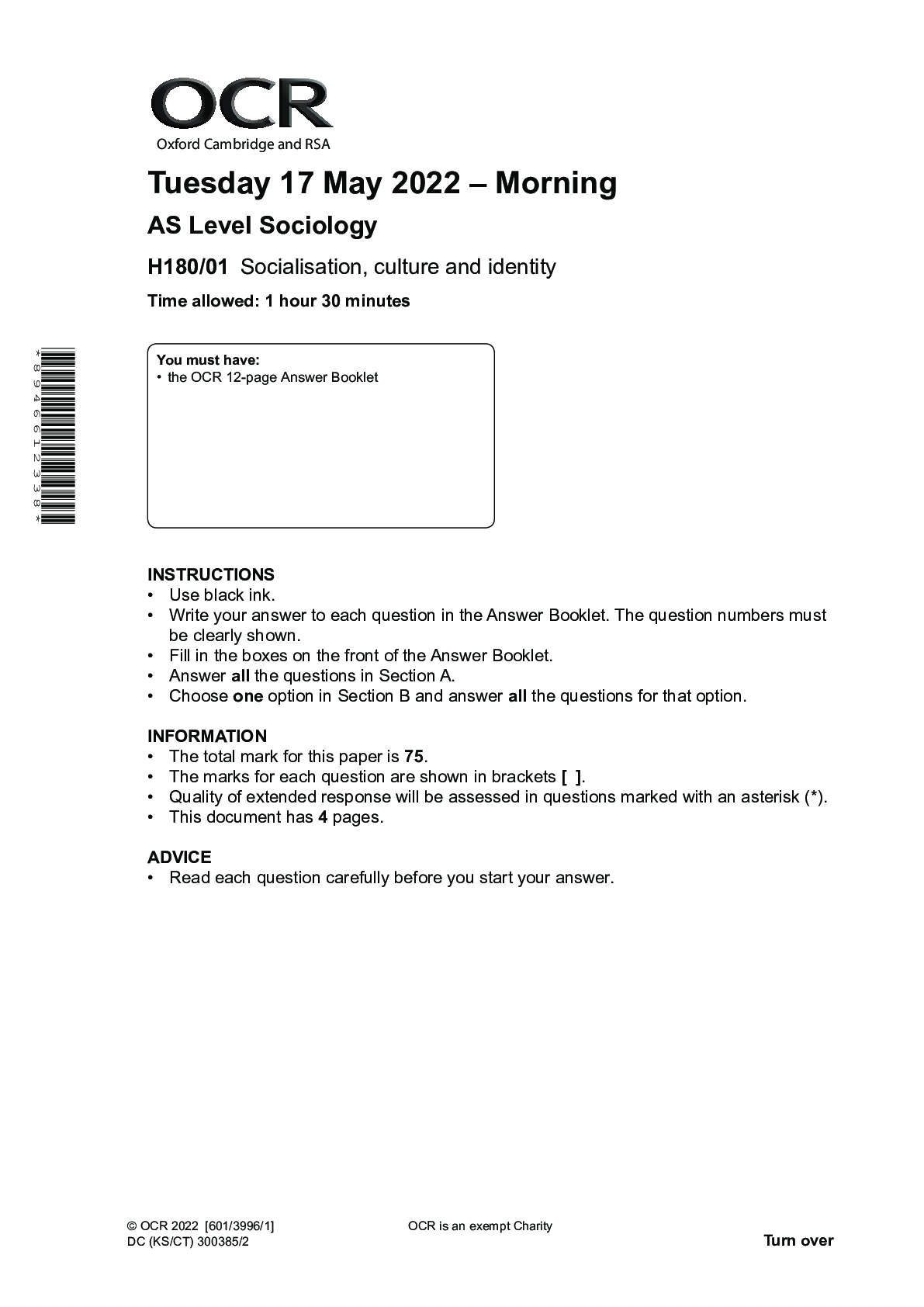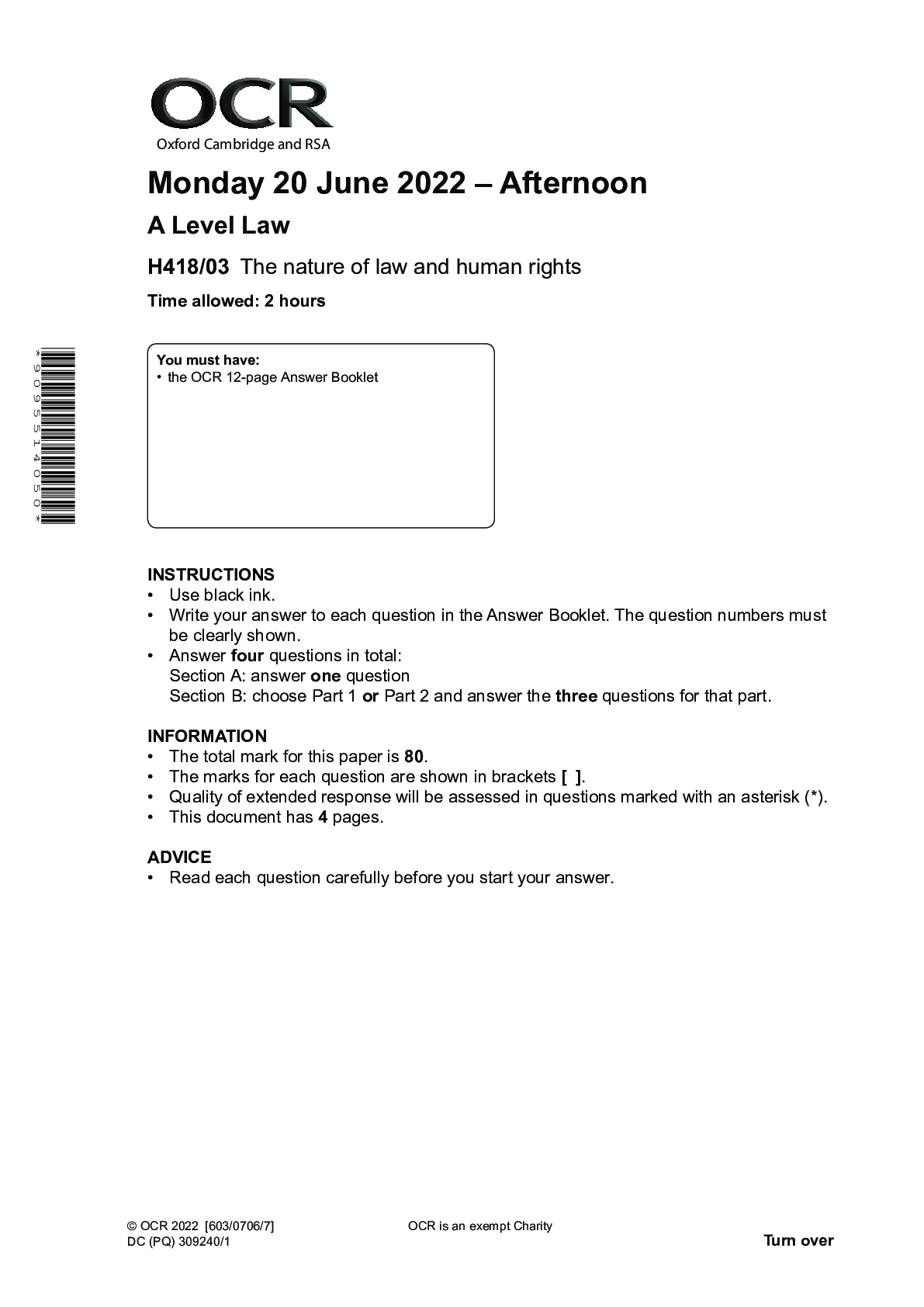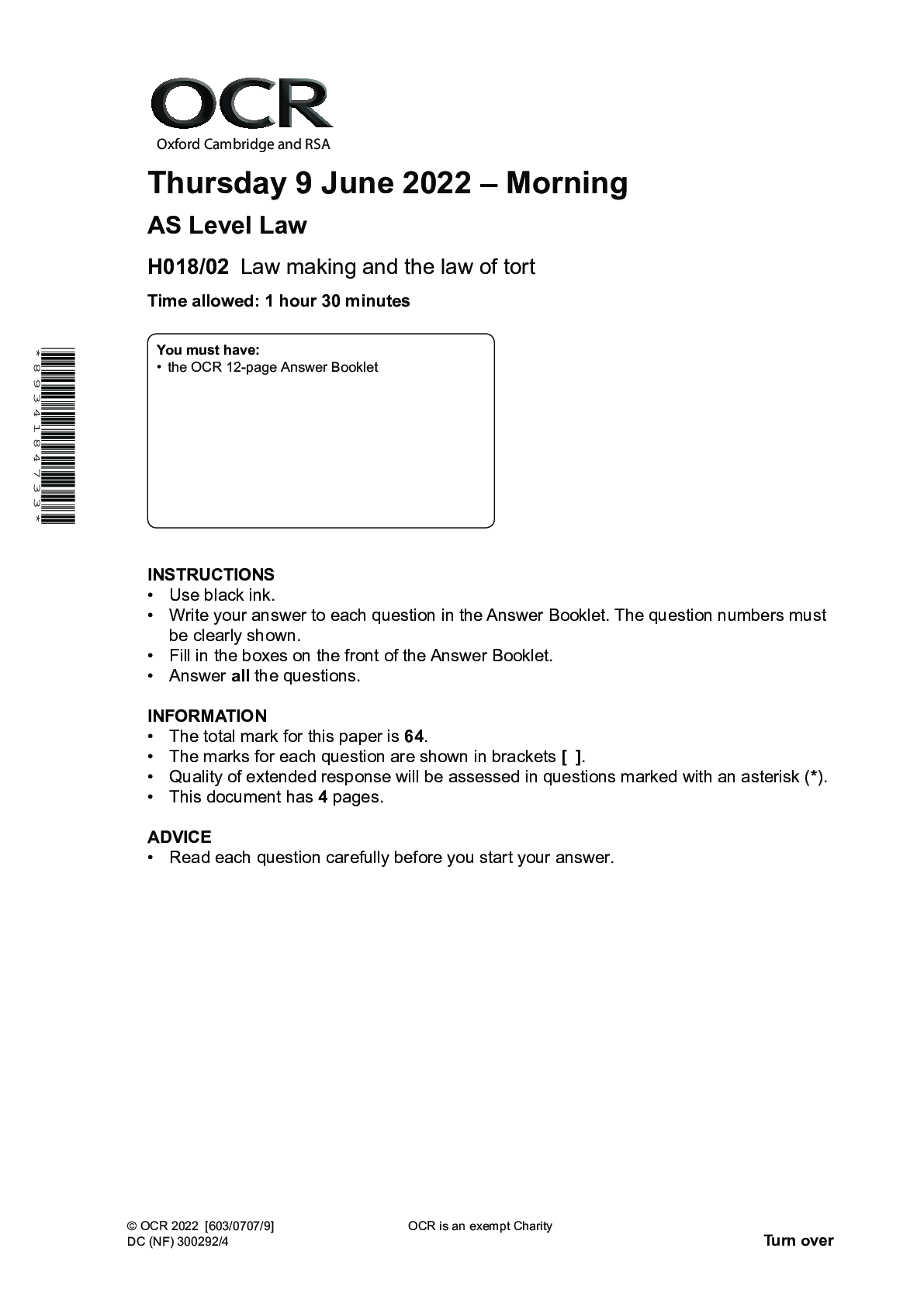Economics > AQA A/As Level Question Paper > A-level ECONOMICS Paper 2 National and International Economy (All)
A-level ECONOMICS Paper 2 National and International Economy
Document Content and Description Below
Materials For this paper you must have: • an AQA 12-page answer book • a calculator. Instructions • Use black ink or black ball-point pen. Pencil should only be used for drawing. • Write... the information required on the front cover of your answer book. The Paper Reference is 7136/2. • In Section A, answer EITHER Context 1 OR Context 2. • In Section B, answer ONE essay. Information • The marks for questions are shown in brackets. • The maximum mark for this paper is 80. • There are 40 marks for Section A and 40 marks for Section B. Advice • You are advised to spend 1 hour on Section A and 1 hour on Section B. A-level ECONOMICS Paper 2 National and International Economy 2 IB/M/Jun22/7136/2 Section A Answer EITHER Context 1 OR Context 2. EITHER Context 1 Total for this context: 40 marks Investment in Africa Study Extracts A, B and C and then answer all parts of Context 1 which follow. Extract A Figure 1: Real GDP (US$ bn), selected African nations, 2015–2018 Figure 2: Foreign direct investment (FDI) net inflows (US$ bn), selected African nations, 2015–2018 Country 2015 2016 2017 2018 Egypt 250.0 260.9 271.8 286.3 Kenya 52.3 55.4 58.1 61.7 Liberia 2.6 2.6 2.5 2.6 Morocco 113.4 114.6 119.5 123.2 Nigeria 461.8 454.4 458.0 466.9 Country 2015 2016 2017 2018 Egypt 6.9 8.1 7.4 8.1 Kenya 0.6 0.7 1.3 1.6 Liberia 0.2 0.3 0.2 0.1 Morocco 3.3 2.2 2.7 3.5 Nigeria 3.0 4.5 3.5 2.0 Source: World Bank, 2020 Source: World Bank, 2020 Extract B: Foreign direct investment in Africa In 2018, foreign direct investment (FDI) in Africa rose to $46 billion, an 11% increase on the previous year. Morocco and Kenya saw some of the biggest rises in FDI, although many nations in Sub-Saharan and Central Africa experienced falls. Nations with high and stable growth seem better able to attract FDI inflows. It was expected that increased rates of economic growth in Africa, along with progress towards the African Continental Free Trade Area (AfCFTA) agreement and key improvements in infrastructure, would boost FDI. Multinational corporations (MNCs) from developing countries have been expanding their activities in Africa but investors from developed countries remain key. French companies are currently the largest investors in Africa, followed by the Netherlands, the United States and the UK. Africa is a key producer of commodities and with higher demand and rising commodity prices, FDI inflows are expected to increase even further. The growing number of special economic zones (SEZs) are also likely to help Africa attract more FDI. SEZs are areas with relaxed trade rules, little regulation and little or no tax on firms that invest in the zone. This makes locating in a SEZ very appealing to foreign firms. The creation of these zones has helped to promote development in several Asian economies and many African nations hope to make their economies more business-friendly. There are an estimated 237 SEZs in the African continent already. FDI can have many benefits. It should create employment, boost long-run economic growth and increase exports. SEZs and improving competitiveness should contribute to the achievement of key macroeconomic objectives and the development of a country’s economy. 5 10 15 20 Source: News reports, 2020 3 IB/M/Jun22/7136/2 Turn over ► Extract C: Problems for Africa It has been said that ‘investing in Africa is only for the brave’. Some of the issues faced by firms include lack of infrastructure such as poor electricity and transport networks, bureaucracy, political instability and corruption. African nations’ current share of global trade is only around 3%. Since African governments began to use SEZs in the early 1970s, they have failed to attract significant investment, to promote exports, or to create sustainable industrial development. SEZs create distortions in markets, with too much focus on short-term gains. Often, conflicts of interest occur between host governments and investors. Many MNCs, that have been attracted to Africa by the SEZs, have been accused of doing little to improve the living standards of the African people. It has been said that they do not create many jobs, they exploit workers and damage the environment. Too often, profits are not reinvested in Africa but distributed to shareholders or invested elsewhere. Some argue that African governments should be doing more to improve the living standards of their citizens, rather than relying on foreign firms. However, high debts, high unemployment rates and low tax revenues often make it difficult for the governments of African nations to develop their economies without investment from abroad. 5 10 15 Source: News reports, 2020 0 1 Using the data in Extract A (Figure 1), if 2015 is the base year, calculate the index of Egypt’s real GDP in 2018. Give your answer to one decimal place. [2 marks] 0 2 Explain how the data in Extract A (Figures 1 and 2) show that nations with high and stable economic growth attract rising foreign direct investment (FDI) inflows. [4 marks] 0 3 Extract B (lines 18–19) states: ‘FDI can have many benefits. It should create employment, boost long-run economic growth and increase exports.’ With the help of a suitable diagram, explain how a rise in inward foreign direct investment (FDI) may lead to increased exports. [9 marks] 0 4 Extract C (lines 13–14) states: ‘Some argue that African governments should be doing more to improve the living standards of their citizens, rather than relying on foreign firms.’ Using the data in the extracts and your knowledge of economics, assess the view that to improve the living standards of their citizens, African nations should pursue policies to attract foreign direct investment (FDI). [25 marks] 4 IB/M/Jun22/7136/2 Do not answer Context 2 if you have answered Context 1. OR Context 2 Total for this context: 40 marks Is inflation a problem? Study Extracts D, E and F and then answer all parts of Context 2 which follow. Extract D Figure 3: Unemployment rates (%), selected economies, 2015–2018 Figure 4: CPI inflation rates (%), selected economies, 2015–2018 Country 2015 2016 2017 2018 Argentina 6.5 8.5 8.4 9.2 Brazil 8.3 11.3 12.8 12.3 France 10.4 10.0 9.4 9.0 UK 5.4 4.9 4.4 4.1 USA 5.3 4.9 4.3 3.9 Country 2015 2016 2017 2018 Argentina 10.0 10.6 25.7 34.3 Brazil 9.0 8.7 3.4 3.7 France 0.1 0.3 1.2 2.1 UK 0.0 0.7 2.7 2.5 USA 0.1 1.3 2.1 2.4 Source: Knoema, 2020 Source: Knoema, 2020 Extract E: Argentina’s economic woes In 2019, Argentina’s inflation rate hit 53.8%, climbing to its highest level in thirty years. This confirmed Argentina’s place among the five countries with the highest inflation rates in the world, just behind Venezuela, Zimbabwe, South Sudan and Sudan. However, inflation isn’t the only problem faced by Argentina. The country has just suffered three years of recession and the government has often struggled to meet its debt repayments. Despite one of the tightest monetary policies in Argentina’s history, implemented in 2018 after a currency crisis, inflation continued to rise and the recession deepened. It was hoped that policy measures, including a reduction in tariffs and strict currency controls, would help to reduce inflation, but so far this has not happened. In 2020, Argentina’s central bank cut its base interest rate to support the recovery of the economy. However, it has been argued that lower interest rates would be likely to cause further inflation. “Loosening monetary policy without having a clear fiscal plan or winning over the confidence of businesses and consumers is a mistake”, said an Argentine economist. Some argue that Argentina should prioritise eliminating inflation over other objectives of economic policy. In the 1970s and 1980s, the UK experienced high inflation. Policies were put in place to reduce the money supply and reduce government spending. The control of inflation became the main target of UK government macroeconomic policy. However, reducing inflation often comes at the expense of growth and jobs, at least in the short term. 5 10 15 Source: News reports, 2020 5 IB/M/Jun22/7136/2 Turn over ► Extract F: Is the problem of high inflation in the past? These days, most advanced economies no longer suffer from rapidly rising prices. Despite over a decade of low interest rates, increases in the money supply and record employment levels, inflation rates in most advanced economies remain low. Since the 1990s, many governments have set inflation targets which their central banks are required to achieve. This has contributed to a reduction in inflation. In some countries, the risk of deflation has been greater than the risk of inflation. In the 2000s and the early 2010s, rising commodity prices added to inflationary pressures. However, since oil and some other commodity prices crashed in 2014, in many advanced economies inflation above 3% has been rare. In emerging markets, inflation tends to be higher, but the direction of change is the same. For nearly two decades, economists have talked about an era of ‘global disinflation’. Low inflation can be self-reinforcing as expectations change. Also, as inflation falls, the real rate of interest is likely to increase, weakening demand and further reducing inflation. This would not be a problem if central banks could cut nominal interest rates sufficiently to offset the risk of deflation, but many have little room to do so. Nominal rates are near zero in the UK, and only a little higher in the USA. Before the pandemic, two-thirds of countries in the Organisation for Economic Co-operation and Development (OECD) had low inflation and a record proportion of their population of working age in employment. This has led some to claim that the Phillips curve is outdated and no longer a relevant model. Low inflation and low unemployment can be achieved simultaneously. 5 10 15 Source: News reports, 2020 0 5 Using the data in Extract D (Figure 3), calculate the difference between the UK’s and Argentina’s mean unemployment rates over the period 2015 to 2018. Give your answer to two decimal places. [2 marks] 0 6 Explain how the data in Extract D (Figures 3 and 4) show that there may be a short-run trade-off between unemployment and inflation. [4 marks] 0 7 Extract E (lines 7–9) states: ‘It was hoped that policy measures, including a reduction in tariffs... would help to reduce inflation’. With the help of a diagram, explain how a reduction in tariffs could help to reduce inflation. [9 marks] 0 8 Extract E (lines 15–17) states: ‘Policies were put in place to reduce the money supply and reduce government spending. The control of inflation became the main target of UK government macroeconomic policy.’ Using the data in the extracts and your knowledge of economics, evaluate the view that achieving a low and stable rate of inflation should be the main economic objective of governments. [25 marks] 6 IB/M/Jun22/7136/2 Section B Answer one essay from this section. Each essay carries 40 marks. EITHER Essay 1 The UK has been running a deficit on its balance of trade in goods and services since 1998. Expenditure-reducing and expenditure-switching policies can both be used to correct a trade deficit. However, the UK government has focused on other objectives rather than achieving a trade balance. 0 9 Explain how expenditure-switching policies can be used to reduce a deficit on a country’s balance of trade in goods and services. [15 marks] 1 0 Assess the view that floating exchange rates are always better than fixed exchange rates. [25 marks] OR Essay 2 In 2018, the European Commission estimated that Bulgaria and Romania were both experiencing positive output gaps whilst the UK was experiencing a negative output gap. Persistent output gaps can cause problems for economies which may be addressed by supply-side improvements. 1 1 Explain the main problems for an economy of having a large positive output gap. [15 marks] 1 2 Evaluate the view that supply-side improvements in th [Show More]
Last updated: 1 year ago
Preview 1 out of 8 pages
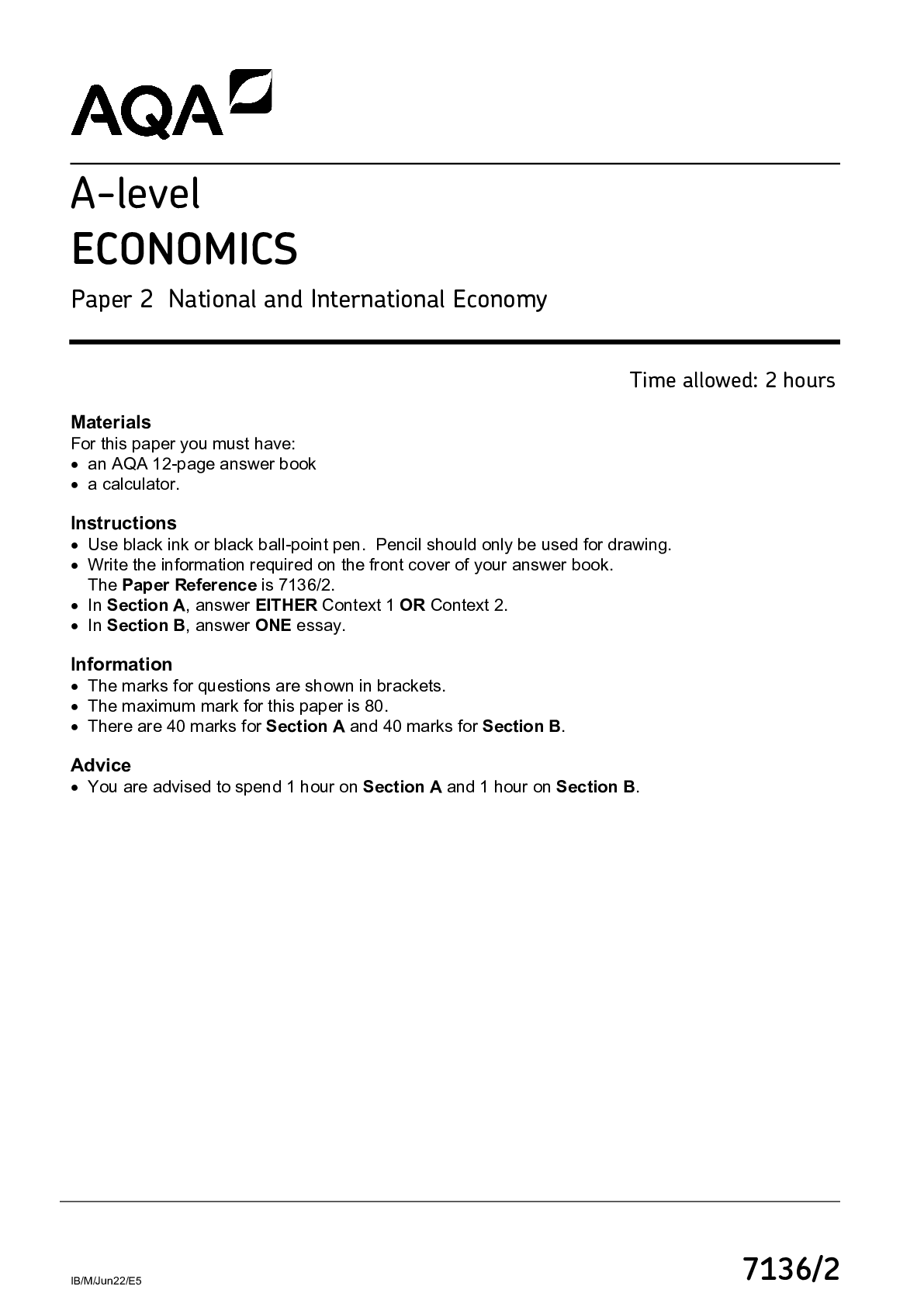
Reviews( 0 )
Document information
Connected school, study & course
About the document
Uploaded On
Apr 01, 2023
Number of pages
8
Written in
Additional information
This document has been written for:
Uploaded
Apr 01, 2023
Downloads
0
Views
90

